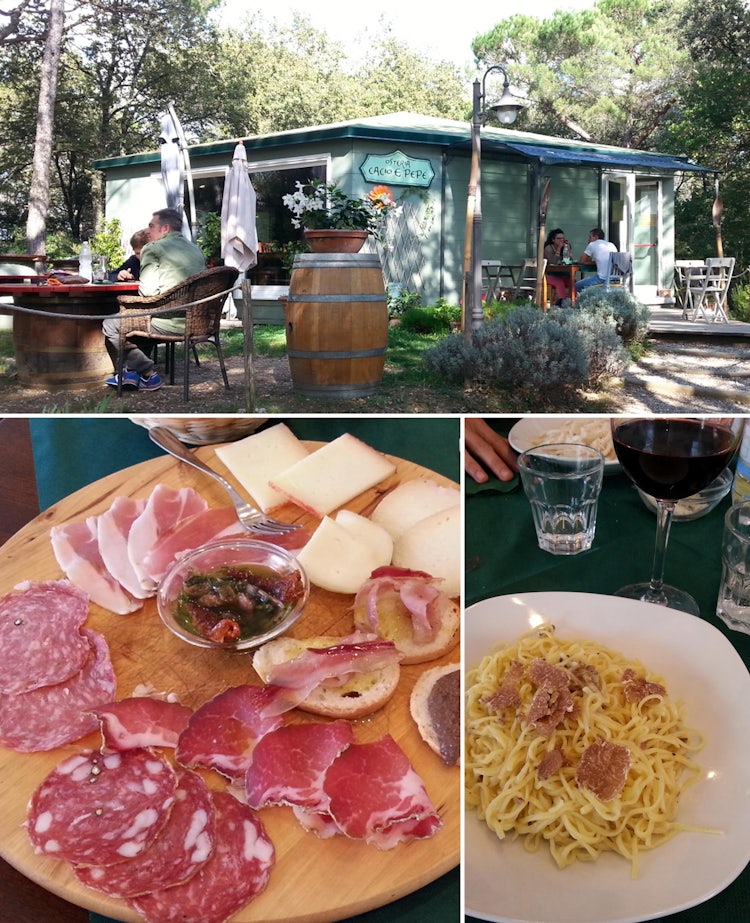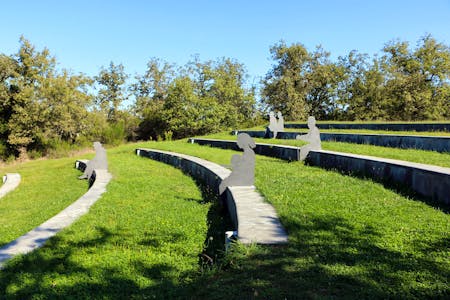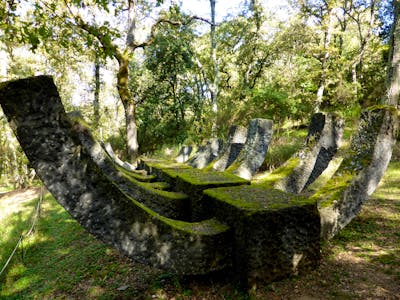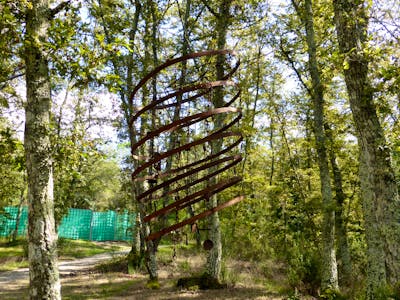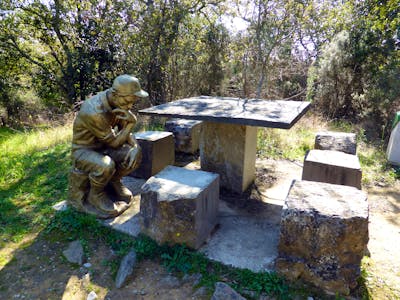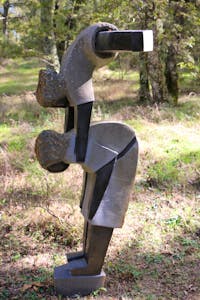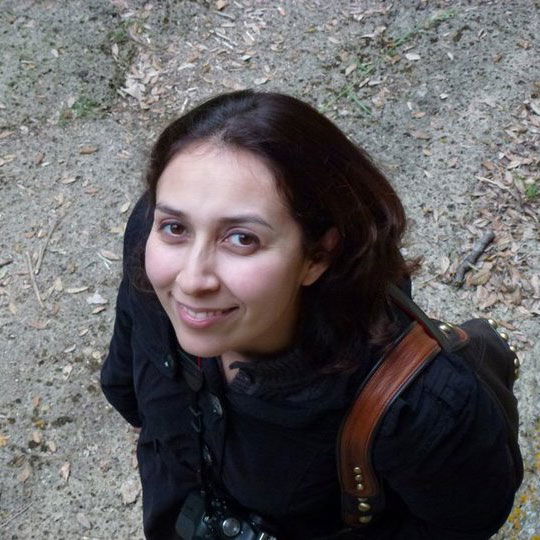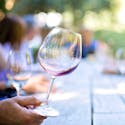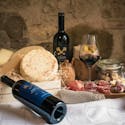Enjoying Chianti and Art in nature at the same time
Contemporary works of art in the outdoors, blending in and creating a dialogue with their Chianti surroundings. This is what the Chianti Sculpture Park offers its visitors, spending an hour or two outdoors admiring works created for this space alone.
We visited the park in early October, on a perfect autumn day full of sunshine. The park is located within an oak wood in between Pievasciata and Vagliagli, about 10km north of Siena. The road we took, in fact, was a “white road”, which is what unpaved roads in Italian are called. The popular “Eroica” bike race on antique bikes takes place on these Chianti roads every fall, drawing thousands from all over the world. Cyclists and those driving by can also enjoy the works here and along the road as Pievasciata itself has become a contemporary art site (more about that below).
The park was born from the inspiration and hard work of Piero and Rosalba Giadrossi on 7 hectares of wood (about 17 acres), and you might even meet them on your visit since they live down the road behind the art gallery and man the ticket entrance on the weekends. We met both Mr. and Mrs. Giadrossi and had a chance to chat about the park, its history, and future. While the park is now managed by an association and all funds from visitors go directly into the maintenance of the park itself, you can sense the Giadrossi's passion and love for art continue to have a daily influence on the park.
Like Villa Gori (Fattoria di Celle) near Pistoia and the Tarot Garden by Niki de Saint-Phalle in Maremma, the Chianti Sculpture Park which opened in 2004 has followed the ancient Italian tradition of creating site-specific artworks for the outdoors. You've only to think of the Boboli Gardens in Florence, designed and created in the 16th century with works commissioned specifically for each area.
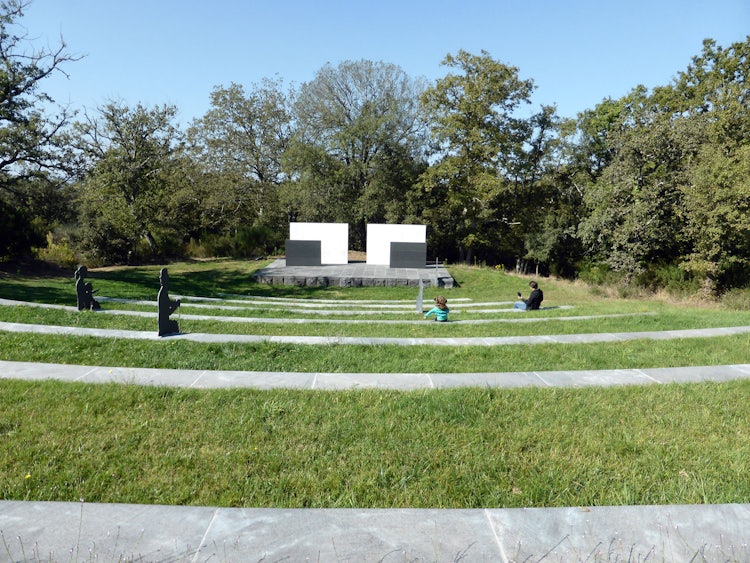
All of the artists, representing over 26 countries, were invited and asked to propose their ideas. The works cover a wide variety of materials, from traditional such as marble and granite to the more modern such as neon lights and sound. There are contrasts in texture, size, open spaces, curves and are quite eclectic. But each has its own space and does not contrast with others, especially as more works continued to be added that took those coming before them into consideration as far as space went.
The park is thus characterized by two main elements: the international representation of artists in the park and the interaction and blending of their art with nature.
The itinerary through the park is not long, about 1km following along a path through the woods. We had our 2-year-old with us and a stroller and it was not difficult at all to make our way along. She also loved several of the works, wanting to get down and wander around them. The park offers two picnic areas within, so if the sun is shining, pack some cheese, salami, bread, and wine to bring along!
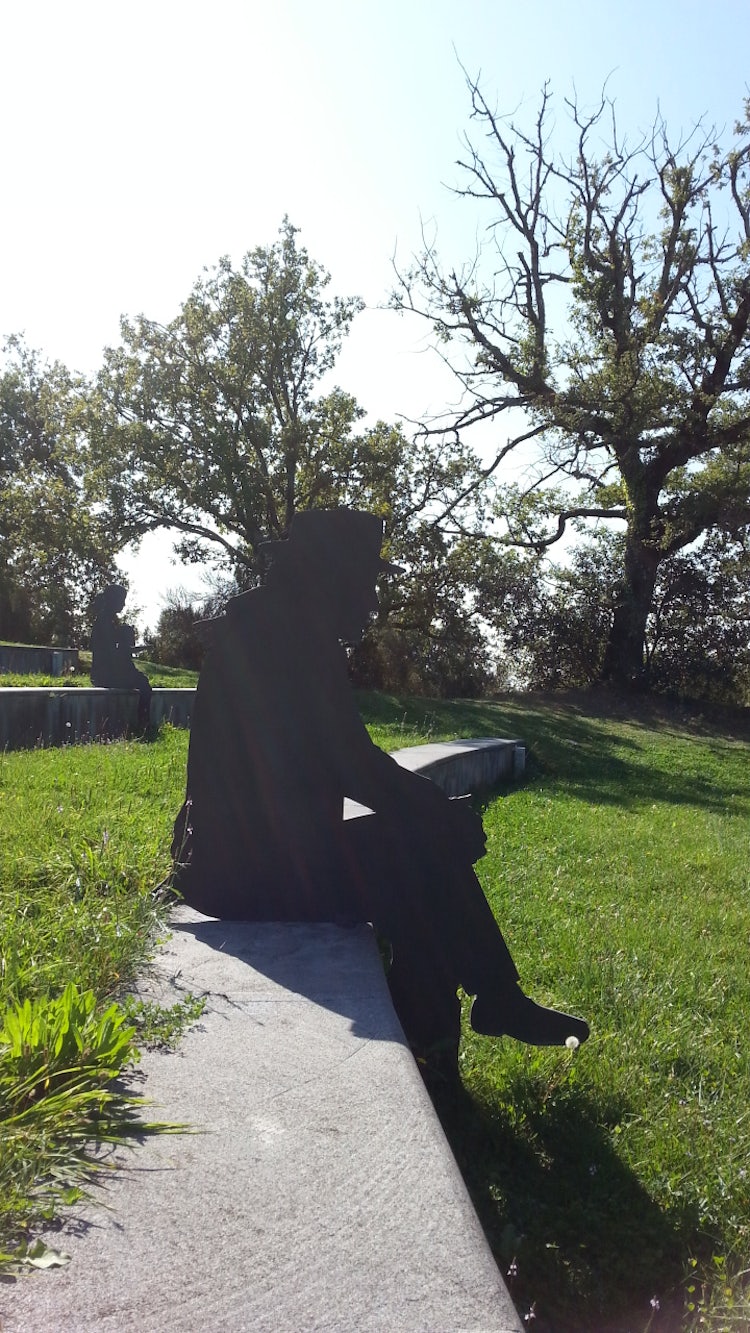
Here is just a selection of some of the artworks we enjoyed and which struck us in one way or another: I suggest you visit the Chianti Sculpture Park yourself and see which ones speak to you!
AMPHITHEATER (photo above) – Built in 2009, the wings of the stage are in a very minimalist style with 4 large slabs of white Carrara marble and black granite from Zimbabwe while the seating terraces take advantage of the natural slope in the land. It has great acoustics and during the summer music concerts are held here every Tuesday right at sunset. If you attend one, you'll be doing so in the company of several famous permanent “spectators”: Alfred Hitchcock directing from the stage, but Federico Fellini, Laurel and Hardy and Charlie Chaplin in the audience.

ENERGY – By the Greek Costas Varotsos, who selected a very rocky position for his work. We immediately thought of a cypress tree, although this 8-meter high construction with it's over 800 sheets of glass weighs over 16 tons!
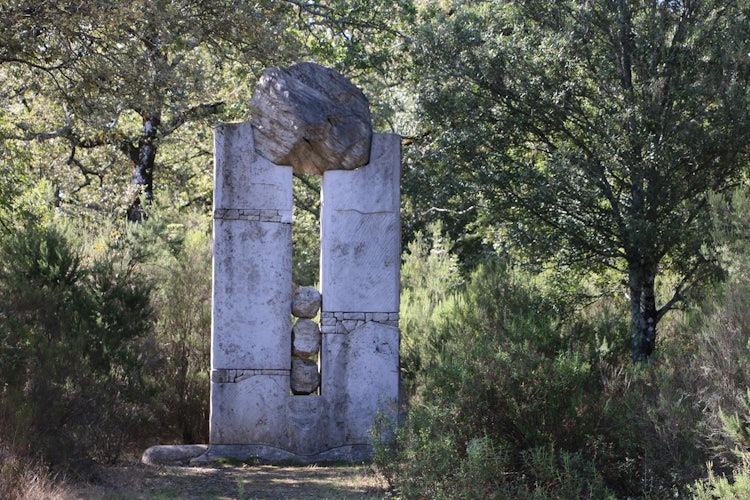
SUSPENDED STONE – By Mauro Berrettini, from Italy. Definitely a return to a more traditional material, as it is made with travertine stone quarried from Rapolano to the south of Siena. Instead of seeing heavy, it looks quite light, suspended in the air.

THINKER – By Ichwan Noor, Indonesia. A homage to Rodin's Thinker, although this one is definitely dressed and actually looks like an ordinary person taking a break from work. You can enjoy your picnic here right next to him or continue on.
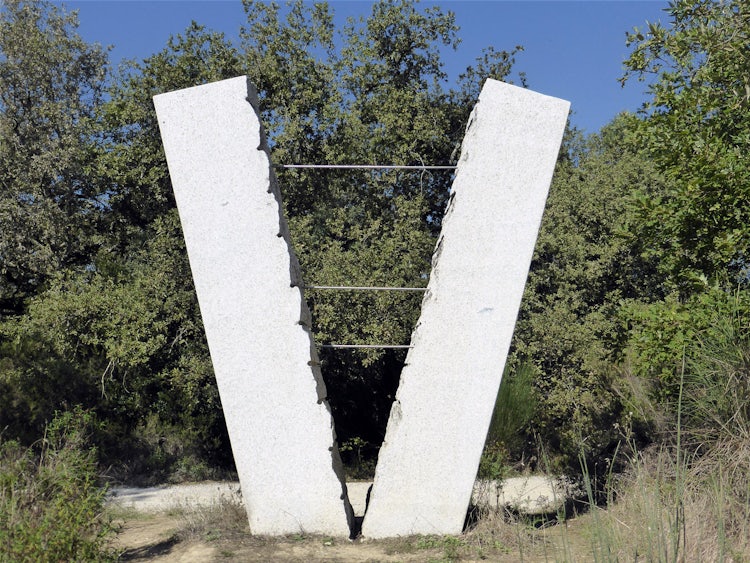
HARMONIC DIVERGENCE – By Swiss Jaya Schurch, we are told she was inspired by the tree across the way. Made from granite from Sardinia and weighing over 6 tons, you are encouraged to sit on the bench behind the work so that you can admire both the work and the tree that inspired it.

FAITH AND ILLUSION – Dolorosa Sinaga, from Indonesia – As a woman, I found this particularly sad. It speaks of the faith we place in progress and its benefit for society. But in the middle stands a suffering woman, as she realizes that this hope for a better future is just an illusion as the rich get richer, the poor get poorer and the benefit is just not taking place. Quite bleak, offering a sense of hopelessness but understandable.
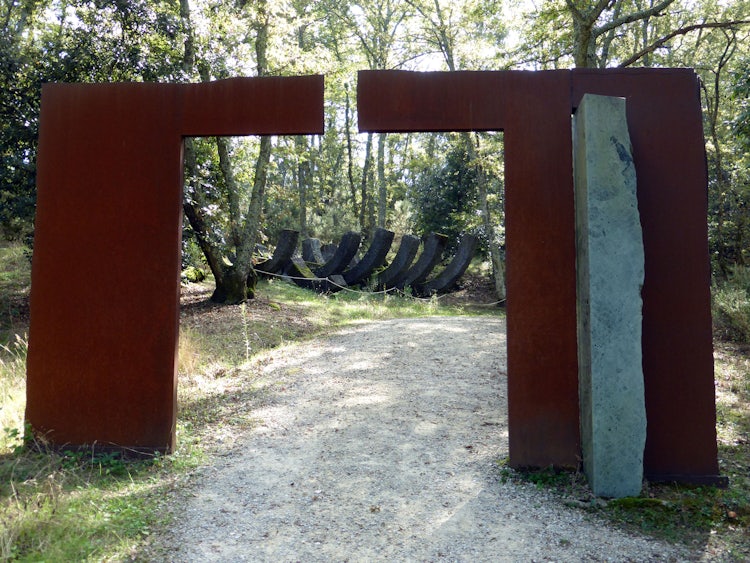
UNFINISHED BUILDING, with THE KEEL in the background – The Dutch artist Cor Litjens was one of the last to add their works to the park, and not finding an ideal spot, decided to set it across the path which actually ends up working very well.
It is made of marble from Val d'Aosta as well as iron. Completion of this “unfinished building” depends on your perspective: we chose to capture THE KEEL from below, a work by the Turkish Kemal Tufan, which completes the building by turning it into a frame. Made in volcanic lava rock, the Keel is 27 pieces put together and with time is taking on the look of the woods as it becomes covered in moss.
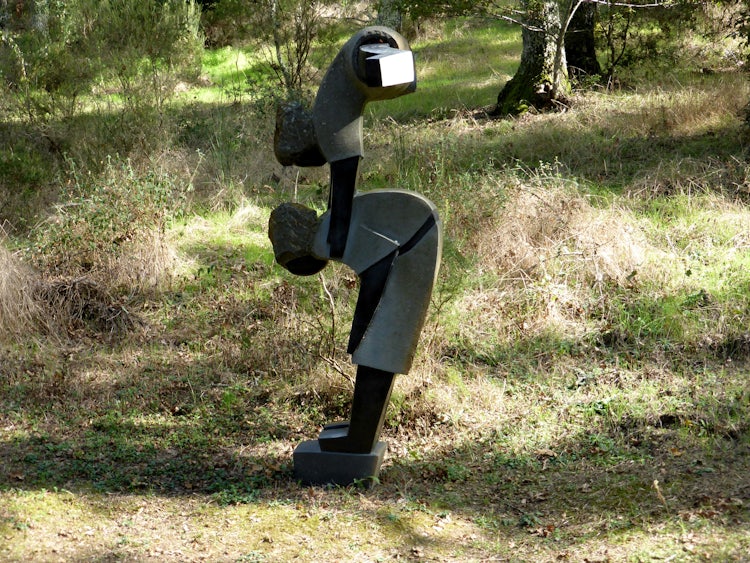
LEAPFROG – By Domenic Benhura, a Shona sculptor from Zimbabwe. The work is carved in Springstone, known as the black granite from Africa, and shows a happy, dynamic group of children in the middle of playing leapfrog. All of the pieces are made of the same granite, the only difference is how much each piece of the body has been worked: none for the hair, and fully for the arms and legs.
I really liked this set of figures of children, very joyful and looking like they were having fun!

LABYRINTH – Jeff Saward is responsible for creating this copy of a labyrinth in stone found in Val Camonica, Naquane dating back to 700-800 BC. The only difference is this is octagonal, not round like the original. My daughter loved playing in this labyrinth, going in through the exit and coming out through the entrance... maybe she figured something out? Definitely can be seen as a search for oneself, which might be found inside. We had trouble dragging her away from this one ;-).
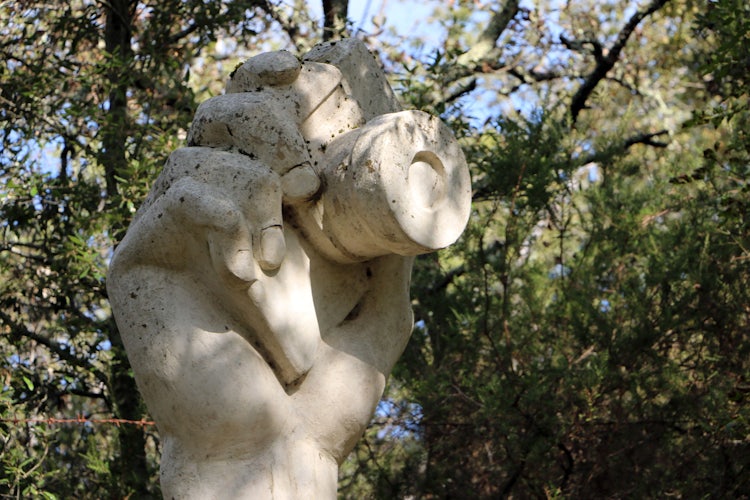
FOR FREEDOM OF THE PRESS – This is the only work with political meaning in the park. The work is by Barrera Fontenla who wished to commemorate the photo reporter José Luis Cabezas, killed in Buenos Aires on January 25, 1997, who was found burned inside his car. As a photographer myself, a death for taking shots of life is quite far from my daily life so this is definitely a reminder of the dangers of documenting the world around us.
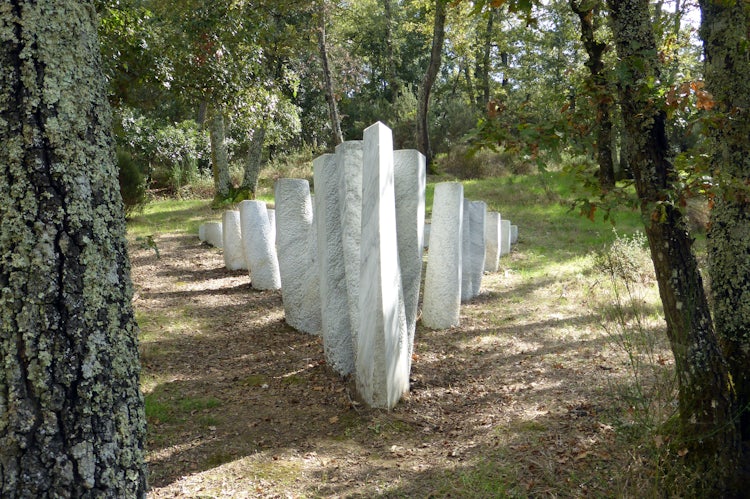
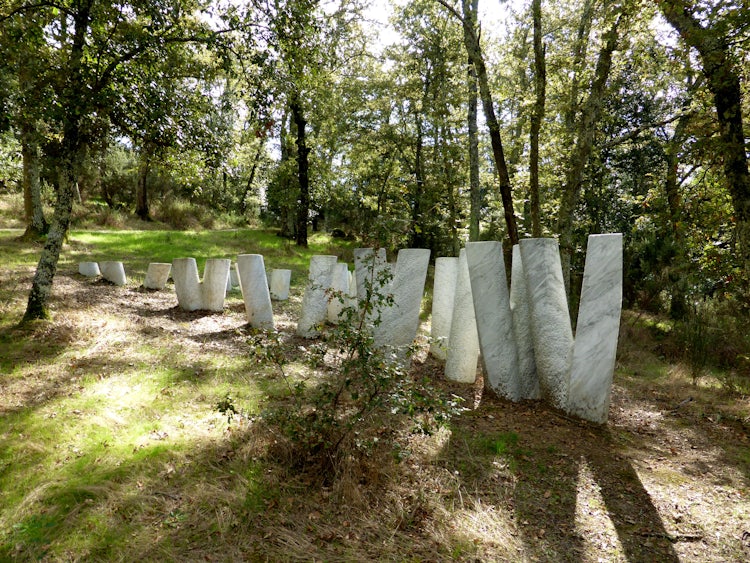
CORNER OF WHITE FOREST – By Nicolas Bertoux, France – We found this one particularly interesting: as it seems one thing when you first come upon it, and changes as you move up the path... here are just 2 views, there are more to find and appreciate.
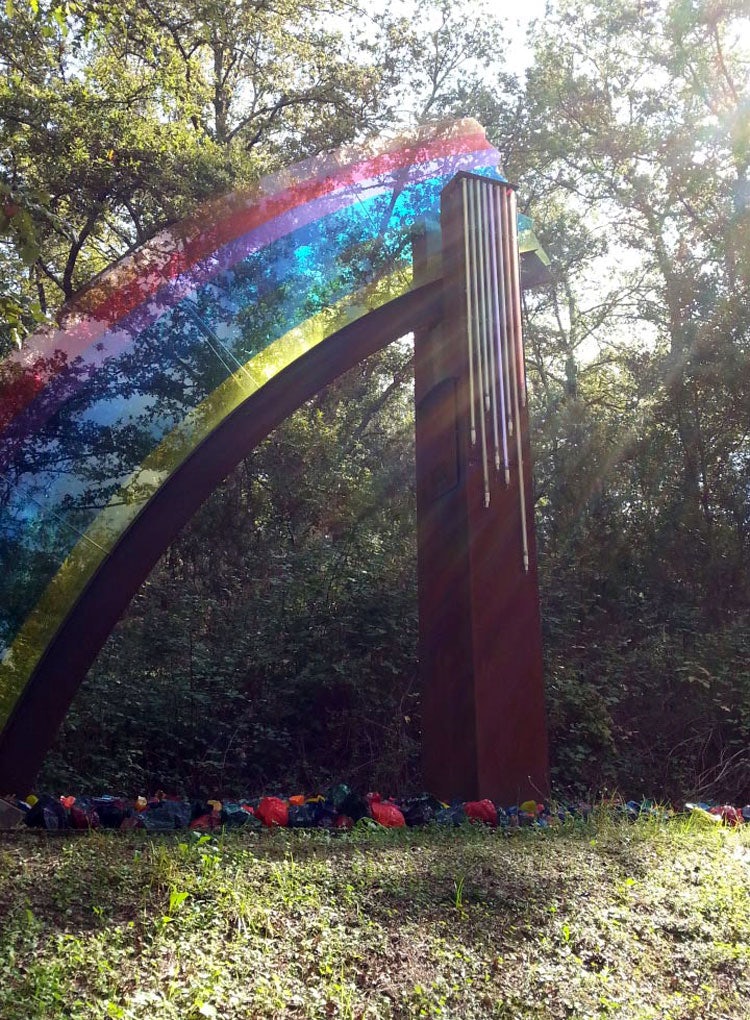
RAINBOW CRASH – This one really jumps out at you. In colored glass from Murano, Italian Federica Marangoni manages to symbolize the fragility of nature by introducing various artificial elements, including the glass but also neon lights. The rainbow is broken, with its colors bleeding out onto the ground. Right next to it is the second picnic area within the park, so a stop might be in order (there is a fountain for washing your hands).
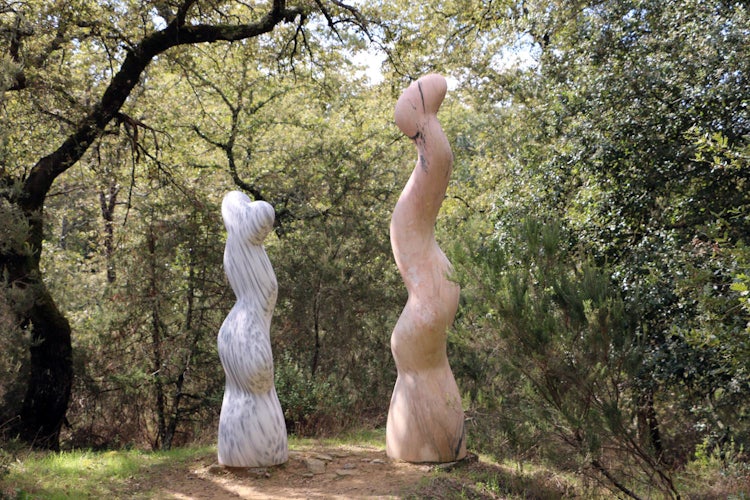
TWIST – by Neal Barab, from the USA. Two pieces of colored marble twisting and spiraling make it seem as if there are two dancing figures. The pink marble is from Portugal, the other from Turkey. It was purposely set in front of a beautiful holm oak tree to draw your attention to the pairing of the colors.
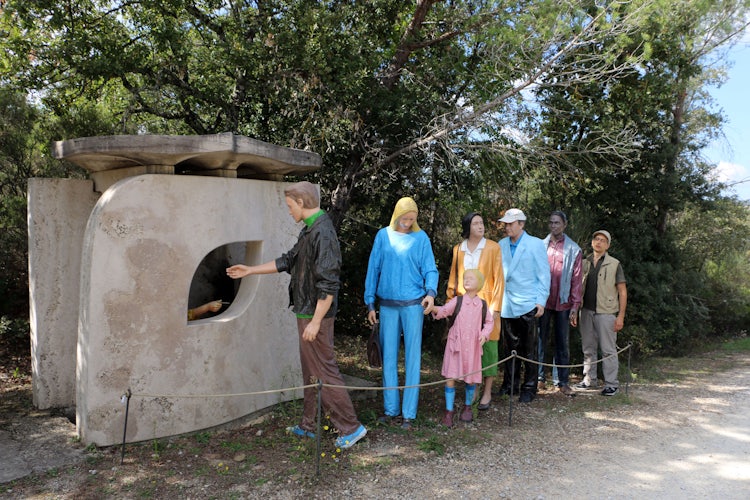
HOUSE IN THE WOODS – Kei Nakamura, Japan. This used to be the ticket office at the very beginning when the park opened, the figures were added later... and, on our visit, we just had to join in at the end of the line, like so many others do ;-).
This is just a sampling of some of the works at the park, as there are over 30 sculptures/installations, including some very practical ones such as a bridge that joins the itinerary from one side of a ridge to the other and the parking structure that has solar panels on its roof.
I can honestly say they were all also very different from each other and a pleasure to discover as you walked along the path. We spent some time at each and definitely took longer than other visitors to the park, who passed us by and weren't seen again. It felt like we had the park to ourselves and were pleasantly surprised as we headed forward and "finding" the next sculpture, you never had the sensation of them being too close or crowded at all as can happen in an indoor setting like a gallery.
We found the dedicated APP called "ChiantiPark" which guided us through the park (available for both Apple and Android devices) very useful and suggest you download it. As you make your way through the park, the APP has an audio explanation of each work, the artist, the materials and a bit of what the artist sought to convey. If you don't have a smartphone or the chance to download it, the ticket office offers the rental of a device to guide you through the park.
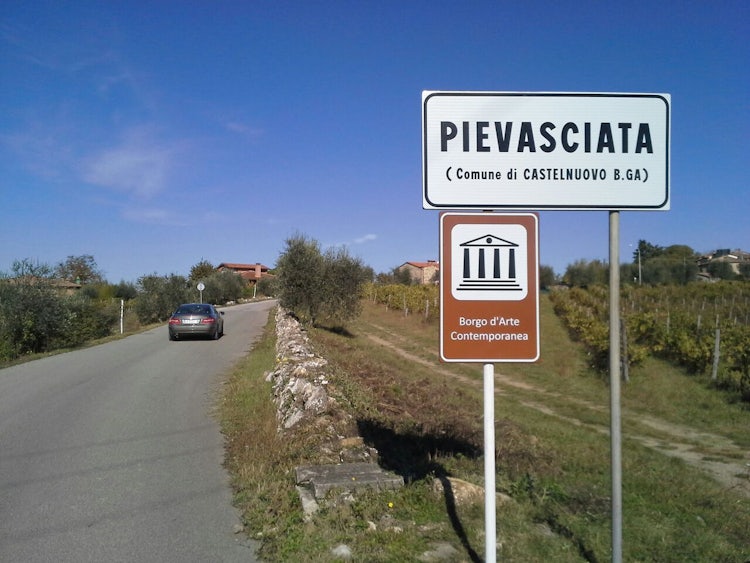
As mentioned earlier, since the park has reached its limit as far as space for more sculptures, the Giadrossi's moved outside of the park's borders and got local citizens and entities on board to convert Pievasciata itself into a town site for contemporary art (Borgo di Arte Contemporanea in Italian). As you travel through the roads leading to and away from the park, make sure you glance right and left to admire more contemporary works, including two huge bell peppers, red telephone booths, and the “Metropolitan Ostriches” by Yu Zhaoyang (China) that you see below.


Aerial view of the park shows the amphitheater, the labyrinth (top left) and the parking area.
Eating Nearby: Cacio e Pepe
After our visit to the park, we headed back toward Vagliagli and by chance stopped at this place right off the road (on the right, easy to miss) before arriving into town. It was quite small in a wooden chalet in the woods, but perfect with anyone with kids given the informal atmosphere and outdoor space. We found several families inside.
We were very pleasantly surprised to find delicious fresh homemade pasta with really fresh truffles and a large platter of local salami and cheeses. It is quite small, so we recommend to call ahead and book if you can, otherwise be adventurous like us and see if they have space at the last minute. It was lunchtime and the small parking area was crowded so were worried at first ;-).
Cacio e Pepe, Lodoline del Chianti-Vagliagli, 53019 Castelnuovo Berardenga, 0577.1652898
